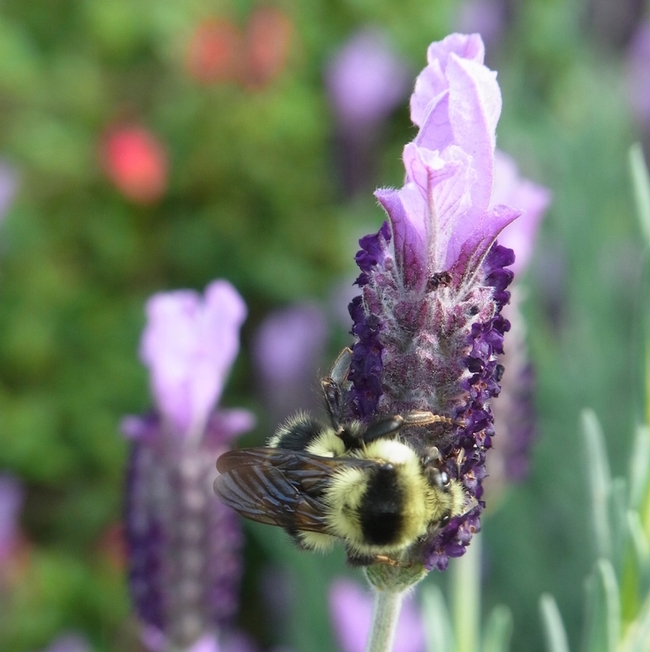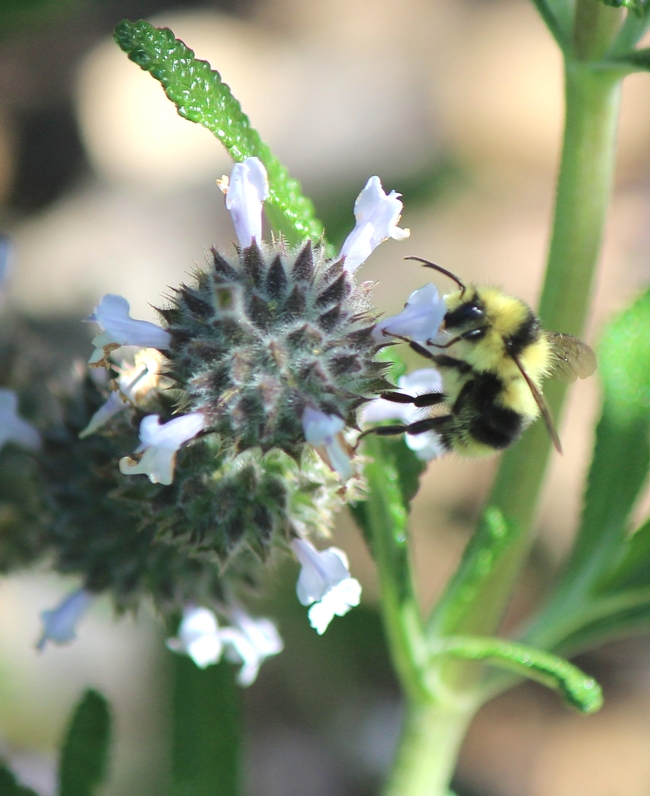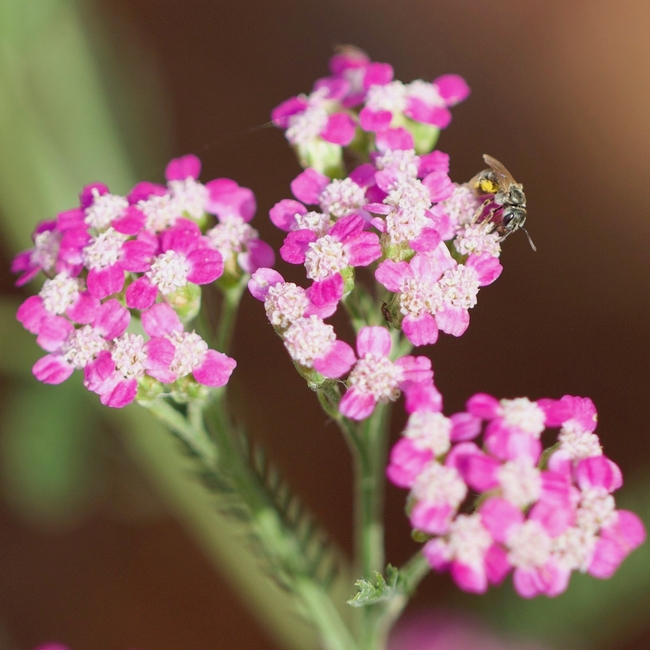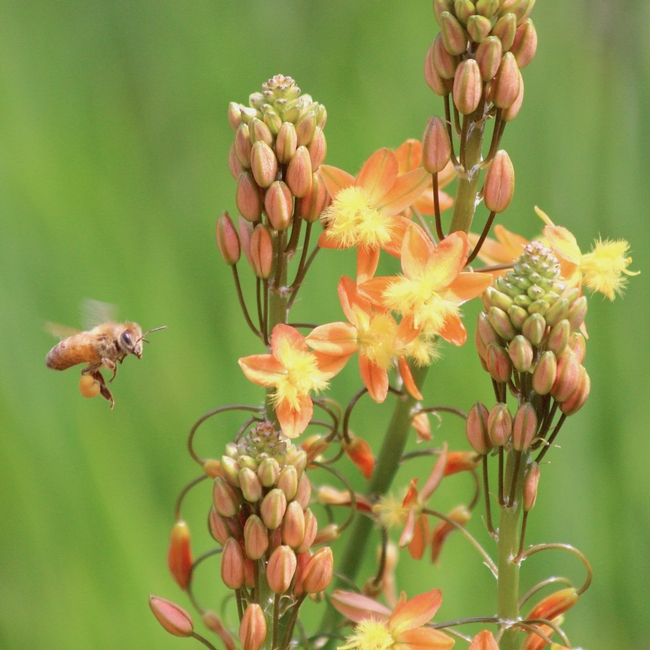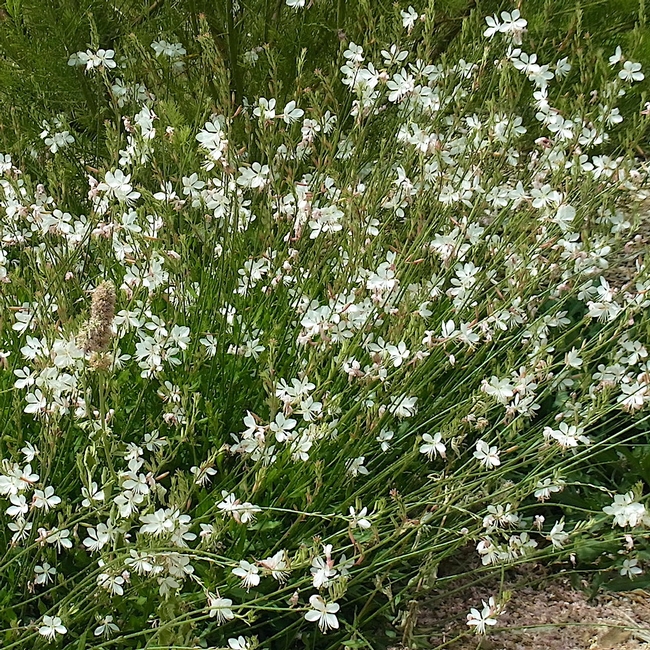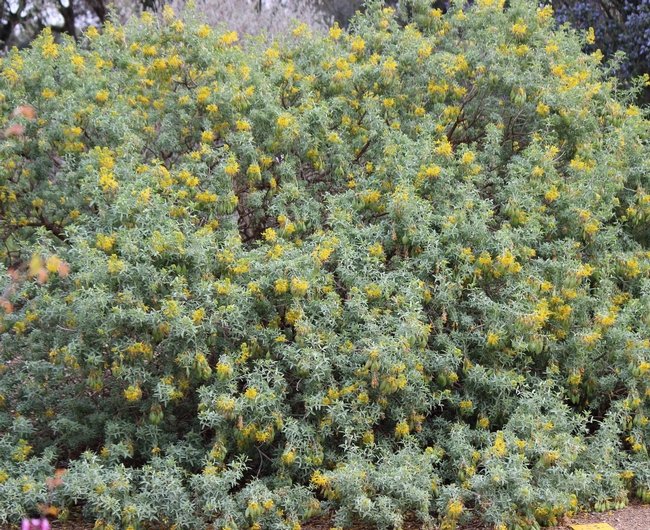- Author: Christine Casey
Bee gardeners are good stewards of the environment, which includes making the most of our precious water supplies in the garden. But are you getting the most Bees Per Gallon? We've recently completed a five-year study to evaluate the bee-attractiveness of common northern California landscape plants. Funded by the USDA-NIFA-SCRI, this work was part of a US-wide project to investigate how the horticulture industry can support bees. At UC Davis, we evaluated low- and medium-water plants that do well in northern California.
While all the plants we tested were bee-attractive to varying degrees, here are the ten most-attractive plants with WUCOLS ratings of L or VL in the Central Valley region. These are the plants that will help your garden support the most bees with the least water -- the most Bees Per Gallon!
This list is not intended to be a comprehensive recommendation. There are other great low-water bee plants (here's a list on the Haven's website); the most detailed recommendation for California bee plants of all water needs is in California Bees and Blooms by Heyday Press.
Yarrow (Achillea millefolium 'Moonshine' and 'Island Pink')
Full sun
WUCOLS rating for the Central Valley = L
Blooms summer and fall
Grows approximately 2ft h x 2ft w
Sunset zones 1-24
Cape balsam (Bulbine frutescens)
Full sun
WUCOLS rating for the Central Valley = L
Blooms nearly year-round
Grows approximately 2ft h x 3ft w
Sunset zones 8, 9, 12-24
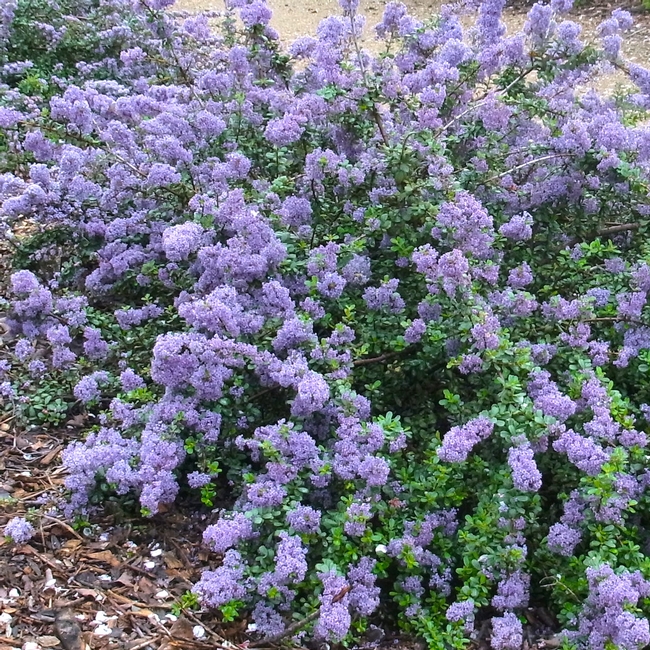
Full sun
WUCOLS rating for the Central Valley = L
Blooms late winter
Grows approximately 1ft h x 4ft w
Sunset zones 5-9,14-24
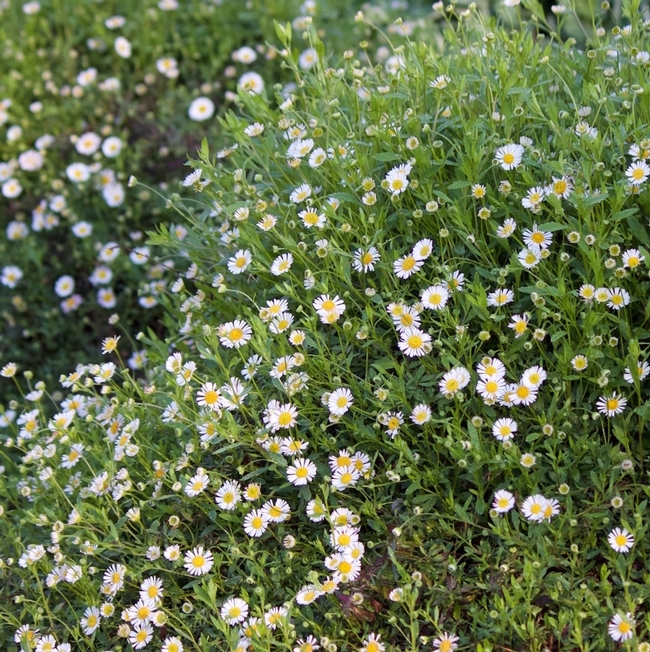
Full sun
WUCOLS rating for the Central Valley = L
Blooms nearly year-round
Grows approximately 3ft h x 3ft w
Sunset zones 8, 9, 12-24
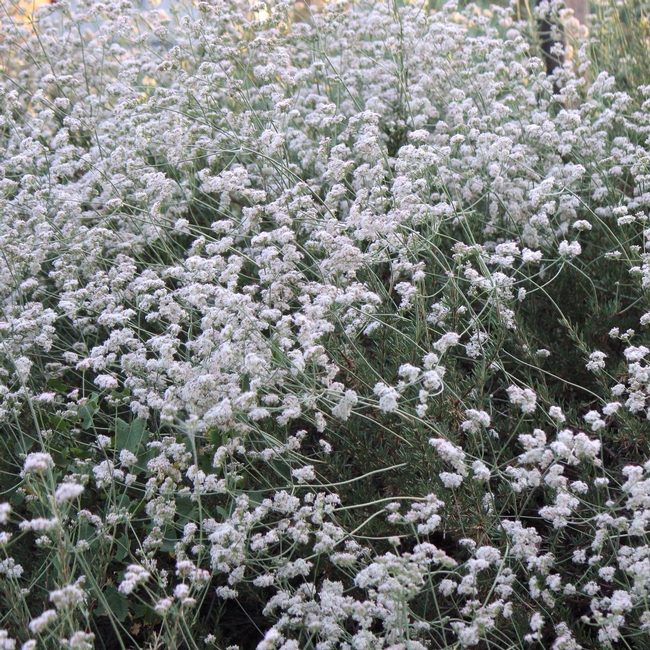
Full sun
WUCOLS rating for the Central Valley = VL
Blooms summer and fall
Grows approximately 3ft h x 3ft w
Sunset zones 7, 9, 12-24
Full sun
WUCOLS rating for the Central Valley = L
Blooms summer
Grows approximately 2ft h x 2ft w
Sunset zones 2B-24
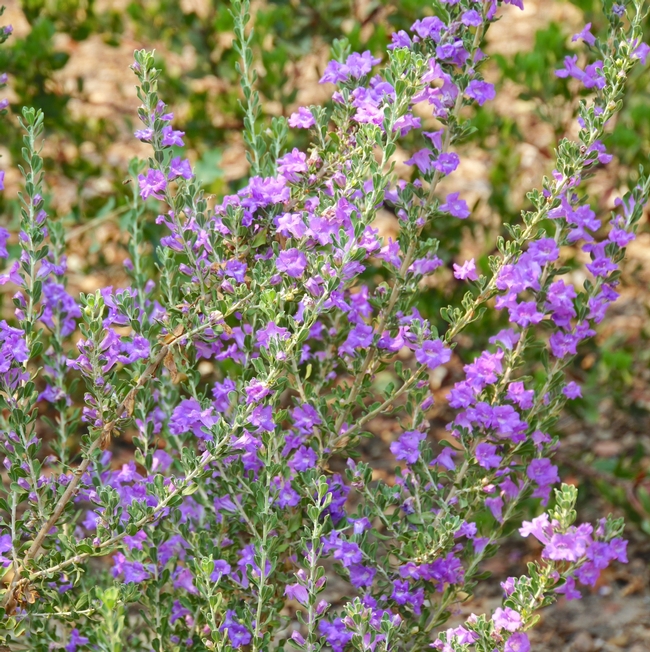
Full sun
WUCOLS rating for the Central Valley = L
Blooms late summer
Grows approximately 4ft h x 4ft w to 8ft h x 8ft w depending on variety
Sunset zones 7-24
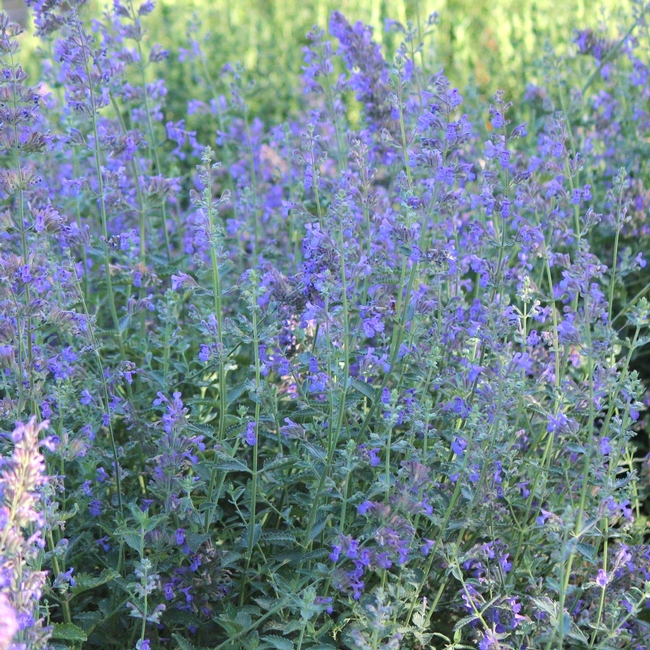
Full sun
WUCOLS rating for the Central Valley = L
Blooms summer and fall
Grows approximately 2ft h x 2ft w
Sunset zones 1-24
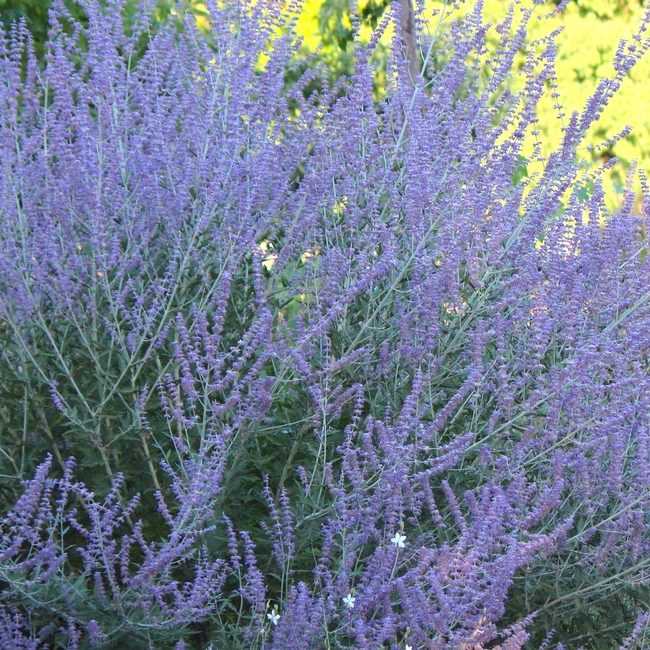
Full sun
WUCOLS rating for the Central Valley = L
Blooms summer and fall
Grows approximately 2ft h x 2ft w to 6ft h x 6ft w depending on variety
Sunset zones 2-24
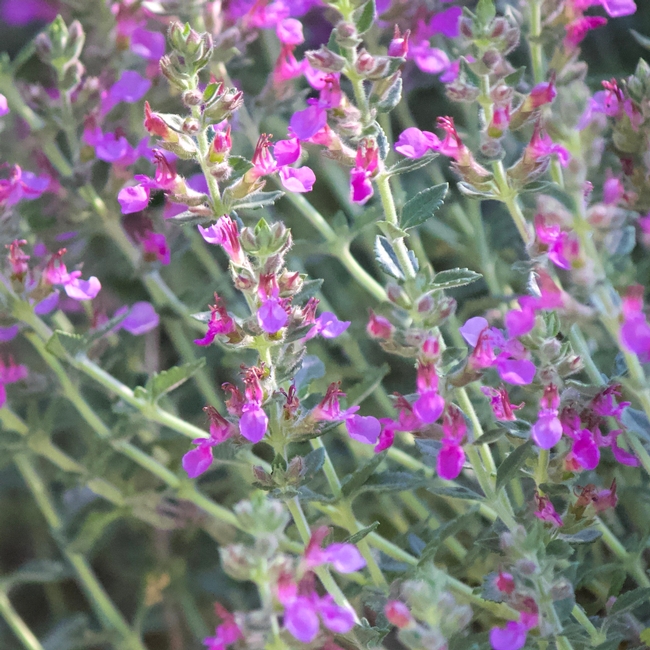
Full sun
WUCOLS rating for the Central Valley = L
Blooms summer
Grows approximately 1ft h x 2ft w
Sunset zones 2-24
- Author: Christine Casey
Conserving water and helping bees are goals shared by many gardeners. Given California's current extreme to exceptional drought status, it's time to re-visit the best low water plants for bees. Haven scientists are nearing the end of a long-term project examining bee preference for commonly used landscape plants. We've focused on low-water plants for northern California, while our San Diego-based colleagues have focused on southern California plants.
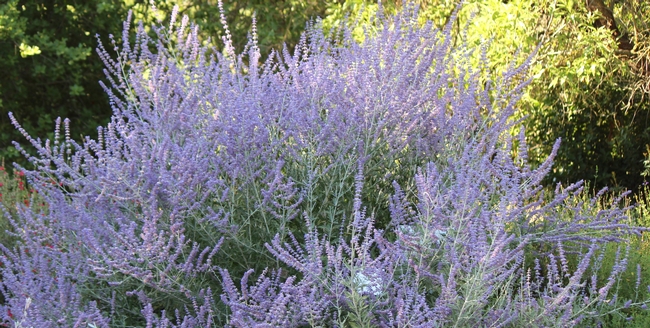
One of the consistently most-preferred plants has been Russian sage, Salvia yangii, formerly Perovskia atriplicifolia (read about its reclassification here). It's been either the first, second, or third most attractive plants to honey bees, and second, third, and sixth most attractive plant to native bees over the course of our observations.
Native to central Asia, this plant copes well with hot, dry conditions as well as extreme cold. It blooms from late spring to frost, providing a season-long bee resource. Like most members of the Lamiaceae, it serves only as a nectar source. Pair it with a complimentary colored pollen-providing plant in pink or red, like the coneflowers shown here, for both garden interest and bee nutrition.
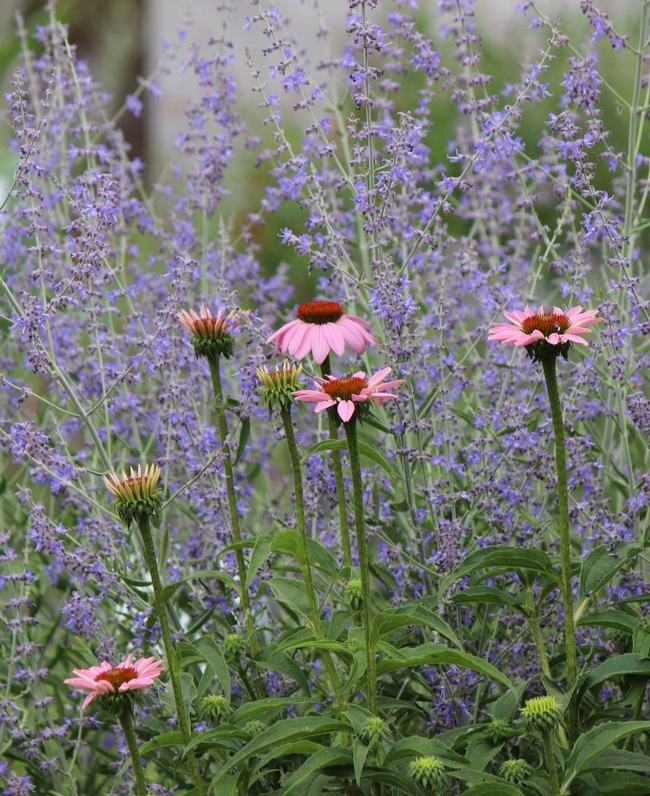
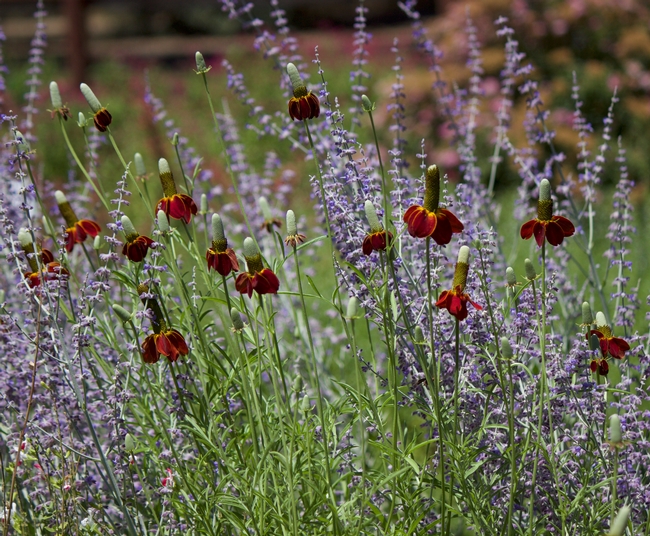
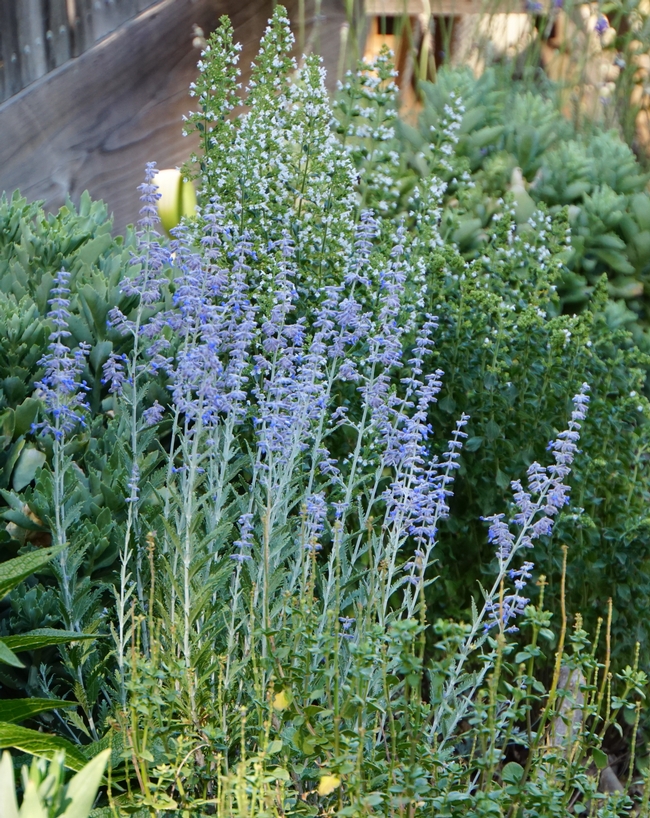
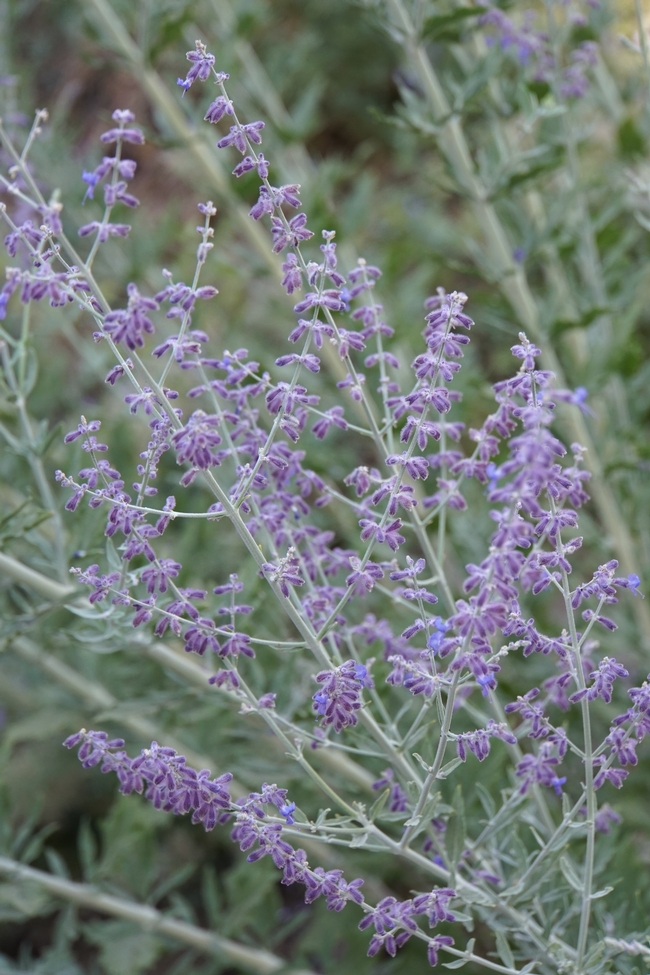
- Author: Christine Casey
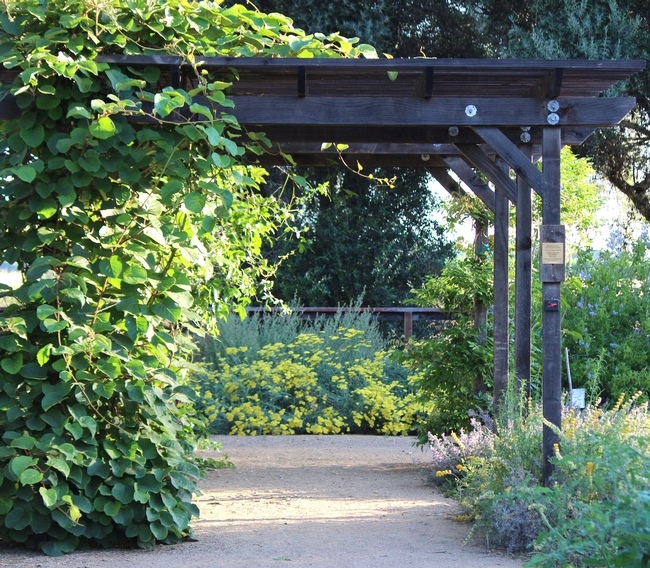
California native vines
These aren't widely available, so you'll likely need to go to a specialist nursery or plant sale to find these. These are listed alphabetically by genus, and I've indicated if it's deciduous or evergreen. These will all grow through a fence or other support and don't need to be tied.
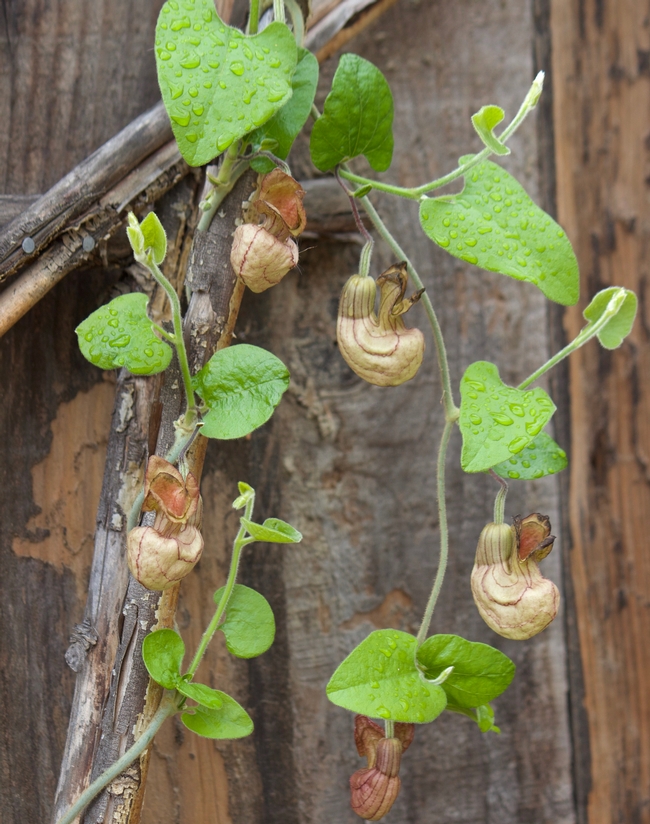
Not a bee plant, but a larval food source for the native California pipevine swallowtail butterfly. The unusual flowers are attractive to flies and appear in early spring before the leaves. Native to riparian areas in northern California and southern Oregon, it will need regular water and part shade in the garden, although it can subsist on less water but will go dormant in the summer. This plant reaches up to 15 feet and can cover a fence or grow up through a tree.
California morning glory (Calystegia purpurata ssp. purpurata). Deciduous to semi-deciduous. Sunset zones 14-24.
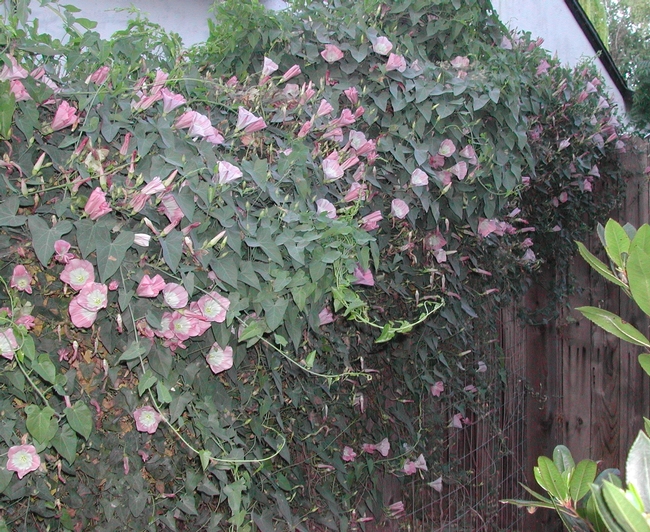
California honeysuckle (Lonicera hispidula). Evergreen. Sunset zones 7-9, 14-24.
This plant is used as either a vine or a groundcover. It differs from the more commonly sold non-native honeysuckles in that the pink and white flowers are more subtle and not fragrant. This spring-bloomer is attractive to many bees -- including honey bees, carpenter bees, and bumble bees -- and is also used by hummingbirds. Grow this low-water plant where the roots will be shaded but the foliage will be in sun. Looks best with a few deep waterings over the summer.
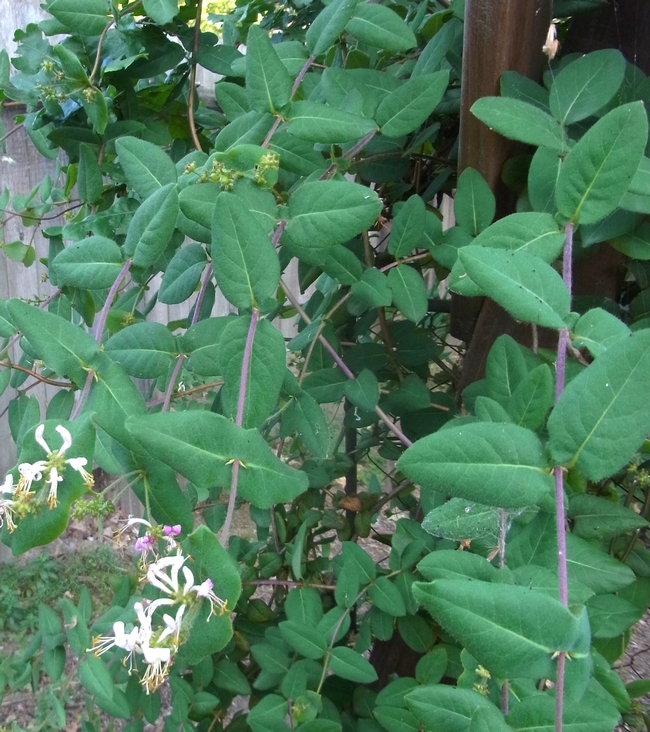
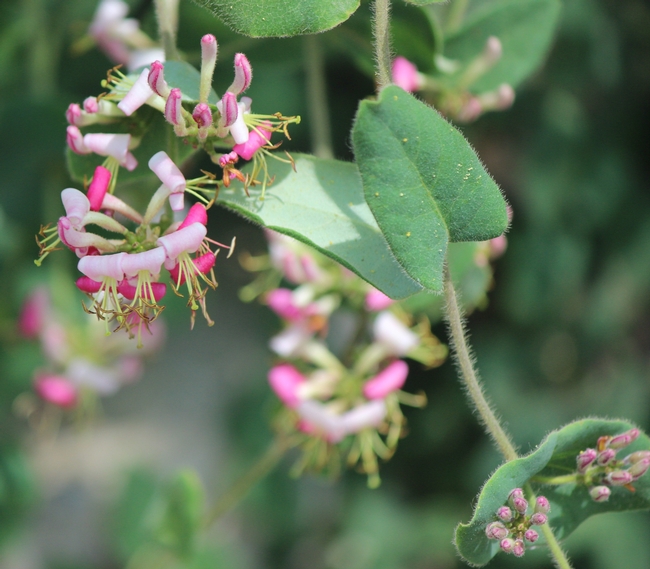
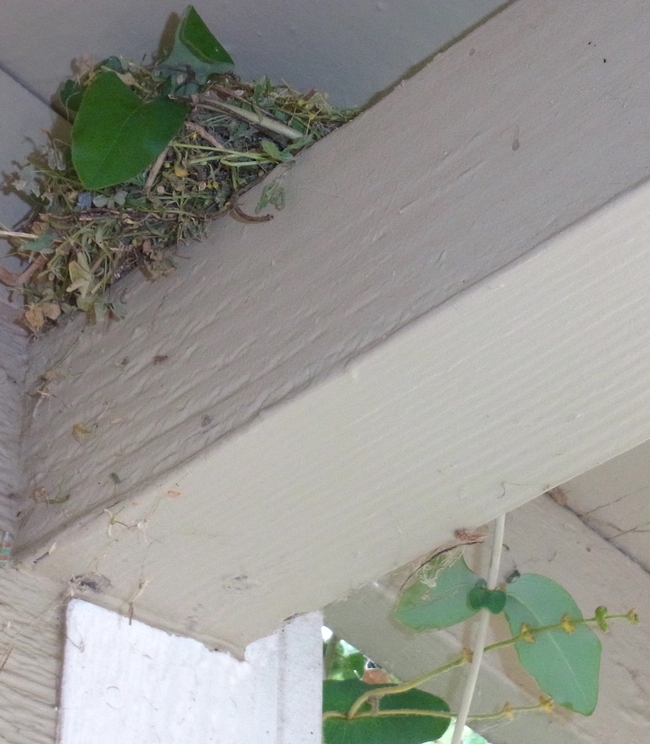
Non-native vines
These are more commonly available than the natives listed above and add additional bloom time and interest to the garden.
Purple lilac vine (Hardenbergia violacea) 'Happy Wanderer'. Evergreen. Sunset zones 8-24.
This Australian native blooms in late winter and early spring. It needs moderate water and full sun, and will need to be tied or otherwise supported as it begins to grow. Thin the stems after blooming to prevent it from becoming too tangled. The small purple flowers are attractive to honey bees.
Passion vine (Passiflora cultivars). Evergreen to semi-deciduous. Sunset zones 5-9, 12-24.
These vigorous South American natives will grow quickly to cover a fence or pergola in one season. Due to this growth habit it has become invasive in Hawaii. While the leaves can look a bit tattered by late summer, the flowers put on a spectacular show. It's the larval food source for the gulf fritillary butterfly, so it brings the colorful non-native adult butterfly to the garden. This vine will need to be tied to a sturdy structure to get it going, but once it starts it will provide fast cover. It needs regular water and full sun to light shade. There are many cultivars available with flowers in varying colors from blue to white. In addition to honey bees, we routinely see carpenter bees using this plant at the Haven.
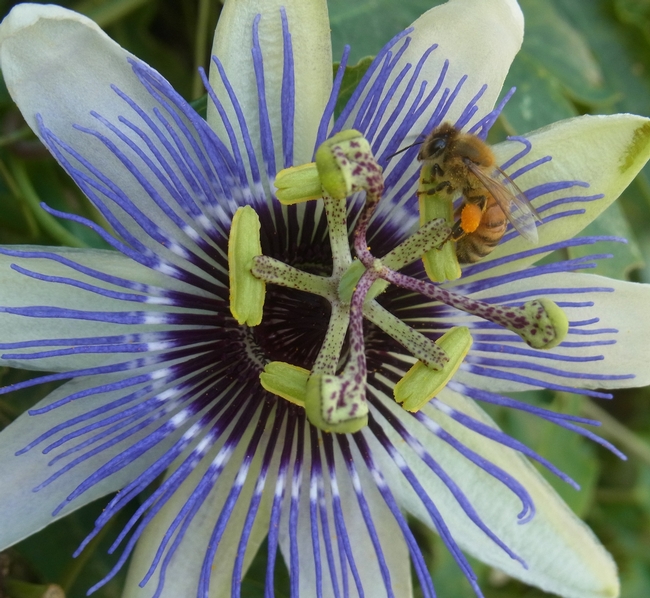
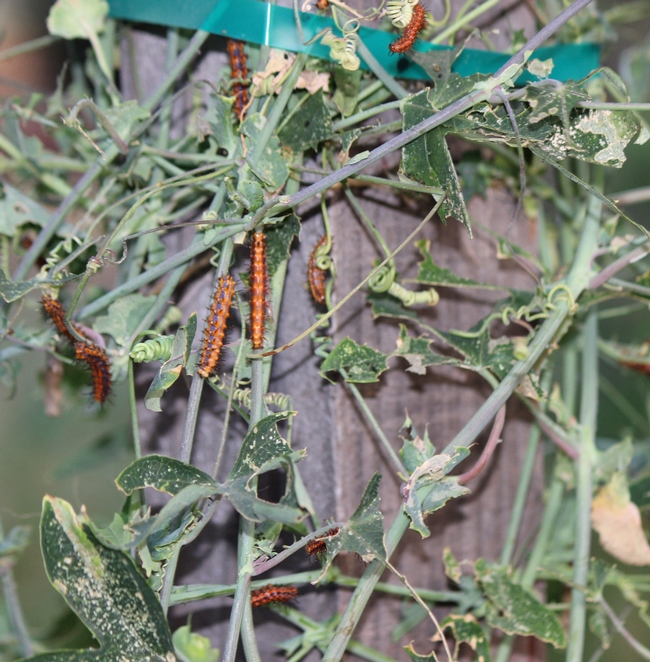
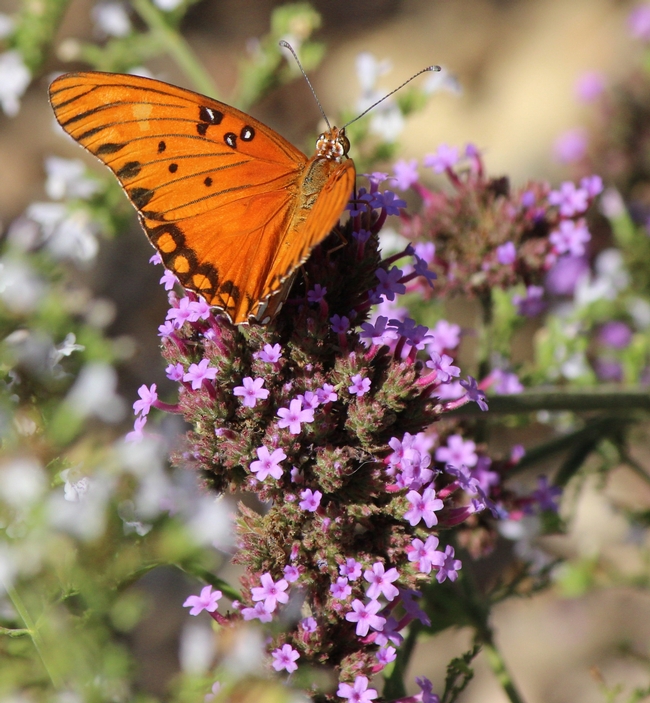
Wisteria (Wisteria sinensis). Deciduous. Sunset zones 3-24.
Next to star jasmine, this very vigorous grower might be the most commonly used vine in the Sacramento region. Just be prepared to give it a very sturdy structure! This Chinese native needs only moderate water and full sun. We grow the cultivar 'Cooke's Purple' at the Haven, as it re-blooms (although not as spectacularly) in July. It is used by larger bees like carpenter bees and bumble bees.
This plant has become invasive in the southeastern US, where the more restrained native Wisteria frutescens is a better choice.
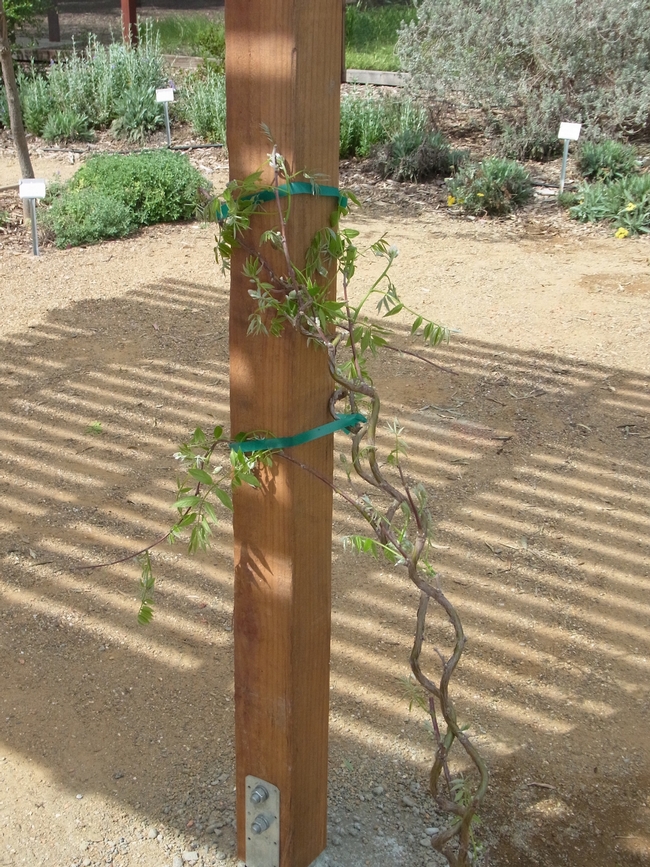

- Author: Christine Casey
It's that time of year: hurricane-force winds one day and beautiful spring weather the next. Here's what's happening in the Haven in March:
Garden maintenance
We've finished our winter pruning and are eagerly awaiting the flowers that will follow. Our winter-blooming plants are going strong, providing vital food for the honey bees at the Laidlaw Honey Bee Research Facility next to the Haven. Some top winter-blooming plants for bees include rosemary (Salvia rosmarinus -- yes, rosemary is now a salvia!), germander (Teucrium fruticans), 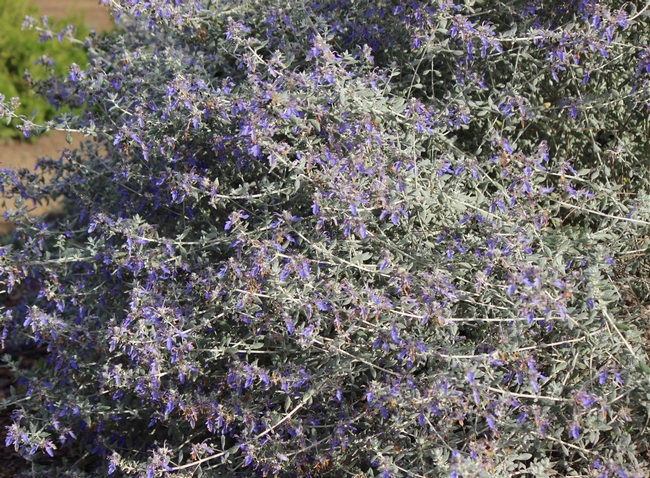
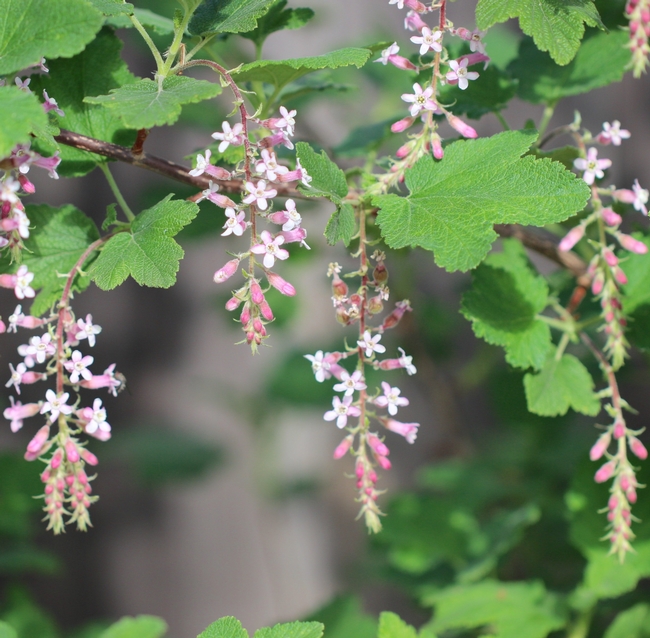

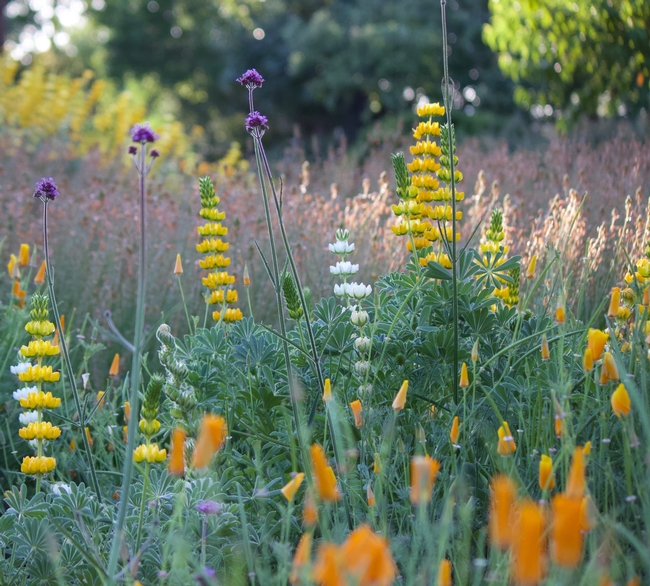
Garden irrigation
Our irrigation system is always given a going-over in the winter to ensure there are no leaks and that the precious water is being used as efficiently as our system will permit. We'll be working on this throughout March.
Garden plantings
This is the start of the time when the Haven changes almost weekly. If you're planning a visit, things really get going in late March, and the garden remains at its best through the end of May. Thanks to a generous donor, we had the funds to replant one of our display beds this winter. We'll be using additional support from our Crowdfund campaign to refresh our demonstration orchard.
If you'd like to plan your own bee garden, you'll find a searchable plant list on our website. The list includes bloom time, bee resources provided, Sunset growing zones, and water and light requirements. In addition to our full plant list, you'll find several targeted (e.g. low-water, shade, etc.) bee plant lists here.
Garden education
Yolo County has moved into a lower COVID tier, and we hope to resume guided tours by the last week of March. Pending approval by the University and COVID restrictions on group size, we look forward to welcoming tours back to the Haven. The garden remains open for individual visitors.
In the meantime, we've loaded more videos to our YouTube channel; look for more throughout March.
Fundraising February
Thanks to everyone who donated, shared, or otherwise supported our February fundraising effort through Crowdfund UC Davis. We've nearly reached our goal of $2500. Contributions may be made here through February 28. Thank you!
- Author: Christine Casey
It's the first week of spring at the Haven and our plants are starting to look their best. For those of you who cannot make it to the garden this week, here's a brief tour of what's going on. For those who can make it, I've included some of the bees to look for.
The garden is currently open, although the cities of Davis and Sacramento are now recommending shelter-in-place. If this expands to other areas or becomes mandatory, the garden will close. Check our web page for the latest information.
Now blooming at the Haven:
Ceanothus, many species. For more detail on this genus, see this previous post.
Western redbud, Cercis occidentalis. This plant provides bright pink flowers early in the year, while leafcutter bees use its foliage for nest construction throughout the summer. This California native needs full sun and little to no summer water. It grows slowly, so it's worth buying a larger size for your own garden. It may be fed on by the redhumped caterpillar; damage occurs towards the end of the season so control is not needed.
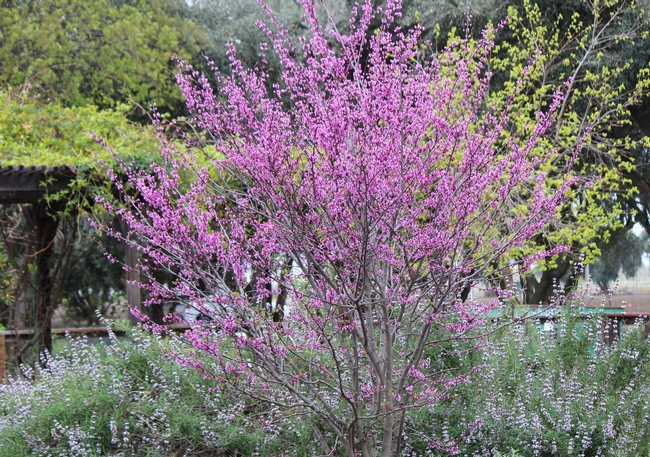
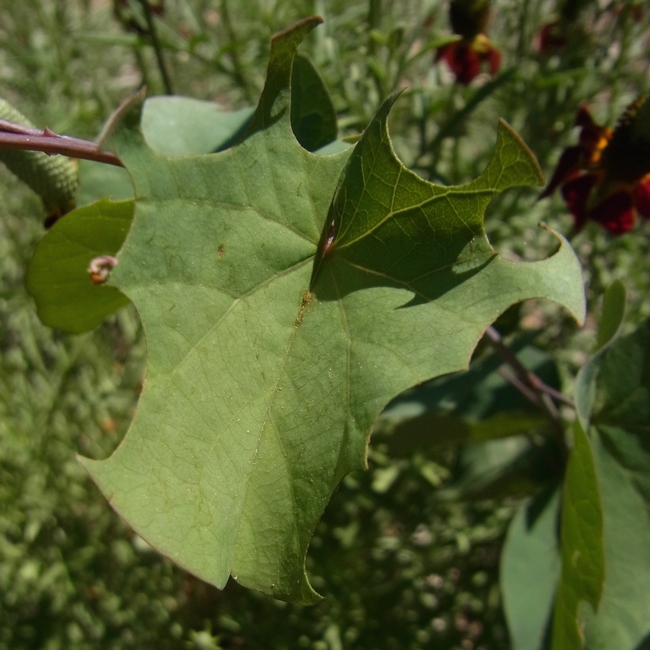
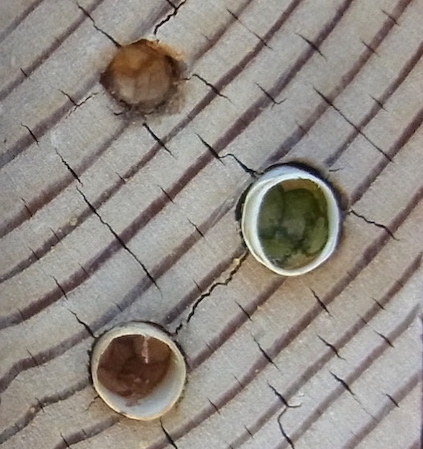
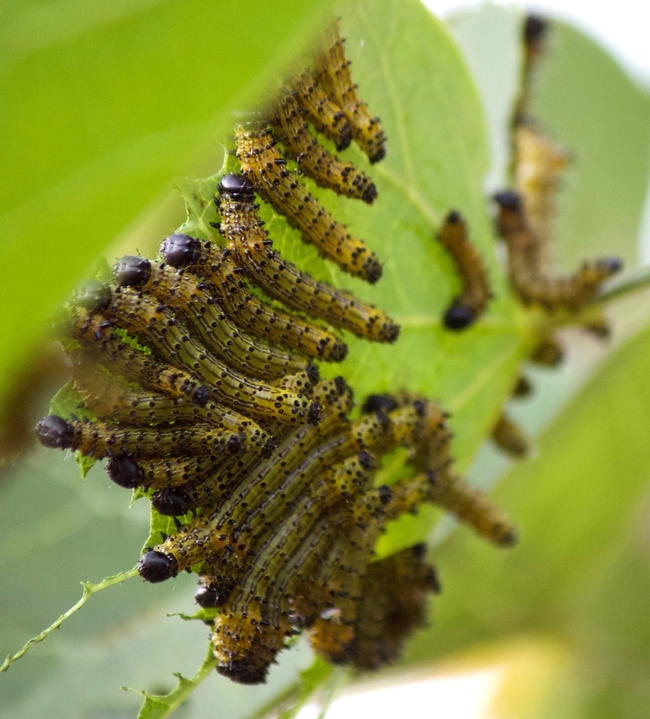
Brandegee's sage, Salvia brandegii. This is a long-blooming California native sage. As you can see from the photo, which shows one plant, it can get quite large. Flowering from late January through May, pair it with the summer blooming native Cleveland sage (Salvia clevelandii) for season-long bloom. It also needs full sun and low summer water.
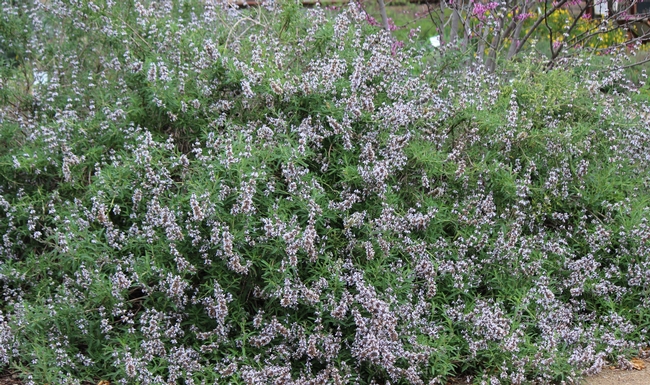
Bladderpod, Isomeris arborea. This is another long-blooming California native. It is at its peak in the spring, but will produce some flowers year-round. Our single plant is about 6 feet by 6 feet. Needs full sun and little to no summer water.
Firecracker penstemon, Penstemon eatonii. This bright red California native is used more by hummingbirds than bees, and adds a jolt of color to the early spring garden. It's soon to be followed by the foothill penstemon, a bee favorite. The firecracker penstemon can take part shade and will re-bloom if given some water after the first flush of flowers. Like most of our native penstemons, it will go dormant in the heat of the summer, at which point watering should stop.
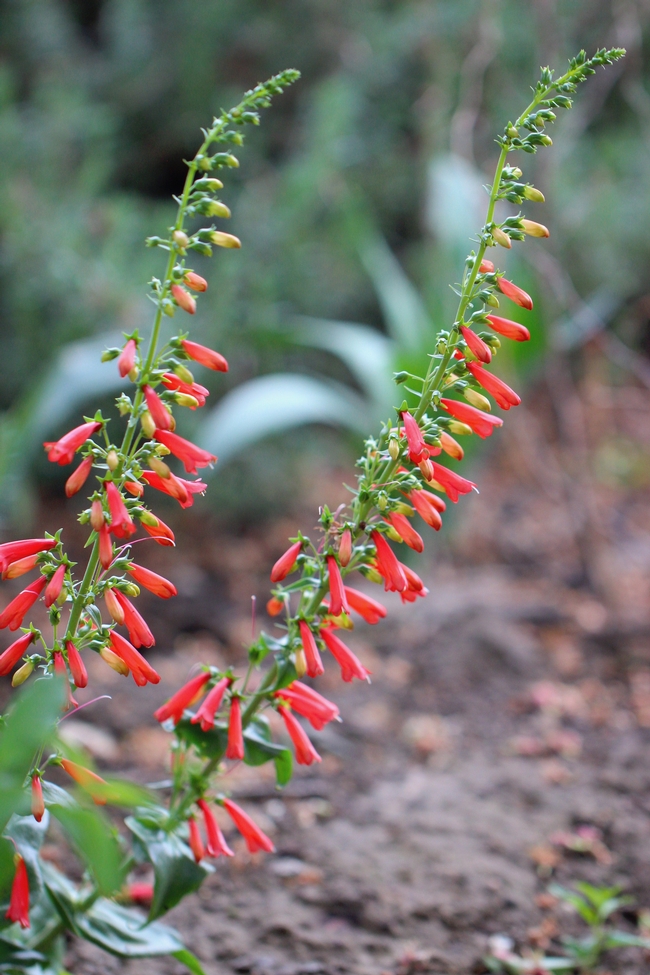
Bees to look for this week include honey bees and the blacktailed bumble bee, Bombus melanopygus. The latter seems to like the Brandegee's sage, so look for it there.
